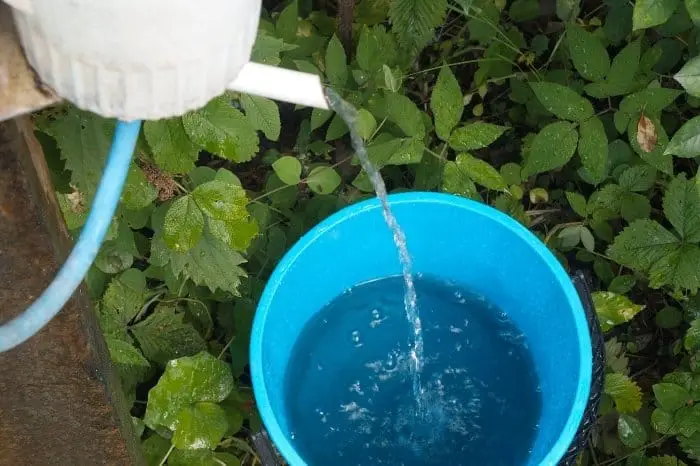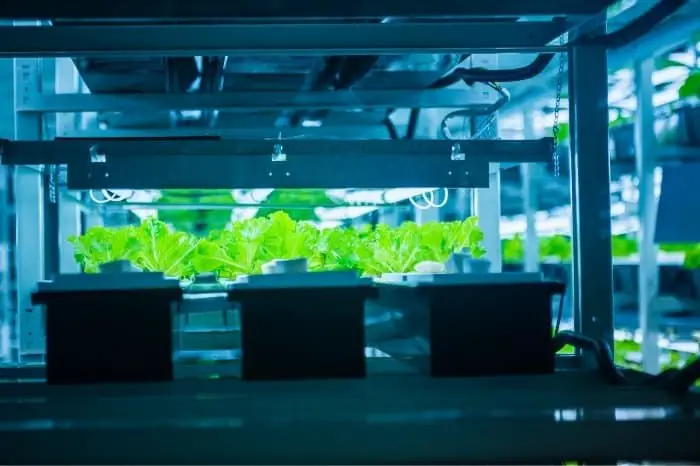Last Updated on October 30, 2022
If you would like to know how to build a recirculating deep water culture system, we will enlighten you on this. We have various types of hydroponic systems and recirculating deep water culture system is one of them.
Recirculating deep water culture system (DWC) is one of the most convenient, easy to build, and moderate cost hydroponic systems you can go for. So let’s explore how to build a recirculating deep water culture system.
What Is A Deep Water Culture & Recirculating Deep Water System?
Deepwater culture (DWC) is a method of hydroponic system gardening whereby plants’ roots are suspended or submerged in a nutrient-rich solution and oxygenated water. There is a reservoir used to store the nutrient and water solution for plants use.
Now, this deep water culture system has different types and recirculating deep water culture (RDCWC) is the one we are going to be talking about.
In a regular or traditional deep water culture, there’s the stress of monitoring each system’s pH, nutrient level, and so on. It is only ideal for a small system. However, if you wish to have a larger system that will contain more plants, recirculating deep water system should be your choice.
Learn How To Build A Recirculating Deep Water Culture System
Recirculating deep water culture system is the combination of different deep water culture systems through some connecting pipes.
The major difference between deep water culture and recirculating deep water culture is that the nutrient water solution in RDCWC will be pumped from a big reservoir. Then it will be passed through other small systems and returns to the reservoir. Thus creating a re-circulation.
Materials Required
A big nutrient reservoir, small gallon of buckets, net pots, air stones, air tubing, air pumps, growing medium, nutrient solution, pH meter, and connecting pipes, grow lights for indoor purpose.
Step 1
Obtain a big reservoir tank for storing nutrient solutions. Now, this big tank will be linked to every other small reservoir for each plant. Then all the small tanks or reservoirs will be connected by pipes.
It is this big tank that will pass or supply nutrient solutions to other small tanks. It will now be returned or recirculated back into the big tank. An inline water filter is used to control and recirculate the water. The roots of your plants will be totally suspended on this nutrient solution.

Note that the big reservoir needs to be stored in a light-proof container.
Step 2
Obtain some air pump and air stone to be put in the big tank and each small tank. Air stones will produce bubbles that encourage gas exchange and good aeration in combination with air pumps. So, this will keep the root of your plants well oxygenated as oxygenation is paramount to the survival of your plants in RCDWC.
Step 3
Next use net pots to hold your plants in. The net pots have holes that will allow your plant roots to reach below the nutrient water solution.
Then go ahead to fill the net tots with a growing medium like perlite, clay pellets, pebbles, lava rocks, and so on.
Step 4
When you’re done setting up your deep water culture system, ensure you check the pH value. Always sustain a pH range of 5.5 to 6.5 for optimal growth.
The nutrient solution in your reservoir can be replaced once a week or once in two weeks. Also, ensure you always check the nutrient conditions in your reservoir with an EC meter and PPM meter.
Deep Water Culture (DWC) Hydroponic Bubbler Bucket Kit
Plants That Can Be Grown In Recirculating Deep Water Culture System
So, plants that can be grown in recirculating deep water culture system include:
Tomatoes, lettuce, herbs, squash, pepper, cucumbers, and so on.
Benefits Of Recirculating DWC System
Below are the benefits you stand to gain when using recirculating deep water culture system for planting:
-
Recirculating deep water culture system is very easy to set up and the components are easily accessible.
-
This system is cost-effective. Also, maintenance is not demanding once your system is up and running. There is less worrying about clogging or blocked pipes or systems.
-
You enjoy the faster growth of plants because nutrients are absorbed directly and easily. Also, the rich oxygenated system encourages faster nutrient uptake.
-
Taller or larger plants can be grown in the recirculating deep water culture system.
-
The watering scheme is very easy.
-
The fertilization requirement is not demanding as the plants are always submerged in nutrient-filled water solutions.

FAQ’s
How do you set up a recirculating deep water culture?
You’ll need a PVC pipe with an internal diameter of at least 12 inches (30 cm), and ideally the bottom end should be threaded. You’ll also need a pump, some tubing to connect the pump to the pipe, and a valve.
You’ll also need a few other things: A tank. A plastic or stainless steel tank is best for this, but if you don’t have one available, you can still grow plants, but the water quality will be poor. You may also need a heating element if you want to keep your growing area warm. A reservoir. This is a container that holds water when it’s not being used to grow plants. It’s usually connected to the tank, so the water level in both containers remains the same. Pots. These are the main part of the system. You’ll need at least two pots, though more would be better. An air pump. If you have a standard garden pump, you should be able to adapt it to work as an air pump, by placing it in a bucket with some holes drilled in the lid. The potting mix. For this you’ll need a small amount of compost or peat, and some kind of plant food.
Fill the potting mix with water until it’s about 3/4 of the way full. Add the growing mix, using at least twice as much as the volume of the water you added. Pump the water through the tubing and into the potting mix in the reservoir, so that the water mixes with the potting mix. Leave the pump running for around 10 minutes. You can check how well the mix is draining by looking at the surface of the water in the reservoir. If it’s still relatively full, turn off the pump and leave the potting mix undisturbed overnight. The next day, check that the water has drained away. If it hasn’t, restart the pump. The first time you do this, you may need to add more fish emulsion to achieve the right consistency. Keep an eye on the level of the water in the reservoir. It should be just below the top of the growing mix. If the water level starts to rise, stop pumping. The extra water will drain away. When the water reaches the top of the growing mix, stop pumping again and wait a few minutes before restarting the pump. This will allow the water to drain away completely. When you restart the pump, keep an eye on the level of the water in the reservoir. It should be at the top of the growing mix. Repeat the process every day or two, until the water level in the reservoir is about 3/4 of the way down the potting mix. If you want to grow plants, you’ll need some kind of light. You can use any kind of light that’s appropriate for your plants, but a combination of fluorescent and regular lighting is probably best. You’ll also need a thermostat. This is a device that controls the temperature of your growing area, so you can maintain a constant temperature throughout the day.
How much air is needed for a DWC system?
The short answer is that it depends on the plants you are growing. If you are growing plants that do not have a lot of surface area, then you will need more air than if you were growing plants with a lot of surface area. If you are growing plants in pots, then you will need more air than if you were growing them in a tray or other container.
Recirculating DWC Hydroponic System Conclusion
We hope by now you have learned how to build a recirculating deep water culture system.

Eunice is an enthusiastic gardener with a passion for growing beautiful flowers. She loves nothing more than spending time in her garden, tending to her plants and enjoying the outdoors. Eunice has been gardening for over 15 years and has developed a unique style of landscaping that is both practical and aesthetically pleasing. She is especially fond of growing roses and enjoys experimenting with different varieties and colors. Eunice takes great pride in her garden and often shares the fruits of her labor with friends and family. In her spare time, she enjoys reading gardening magazines and attending local horticulture events. Eunice is passionate about her hobby and is always eager to share her knowledge and experience with others.

